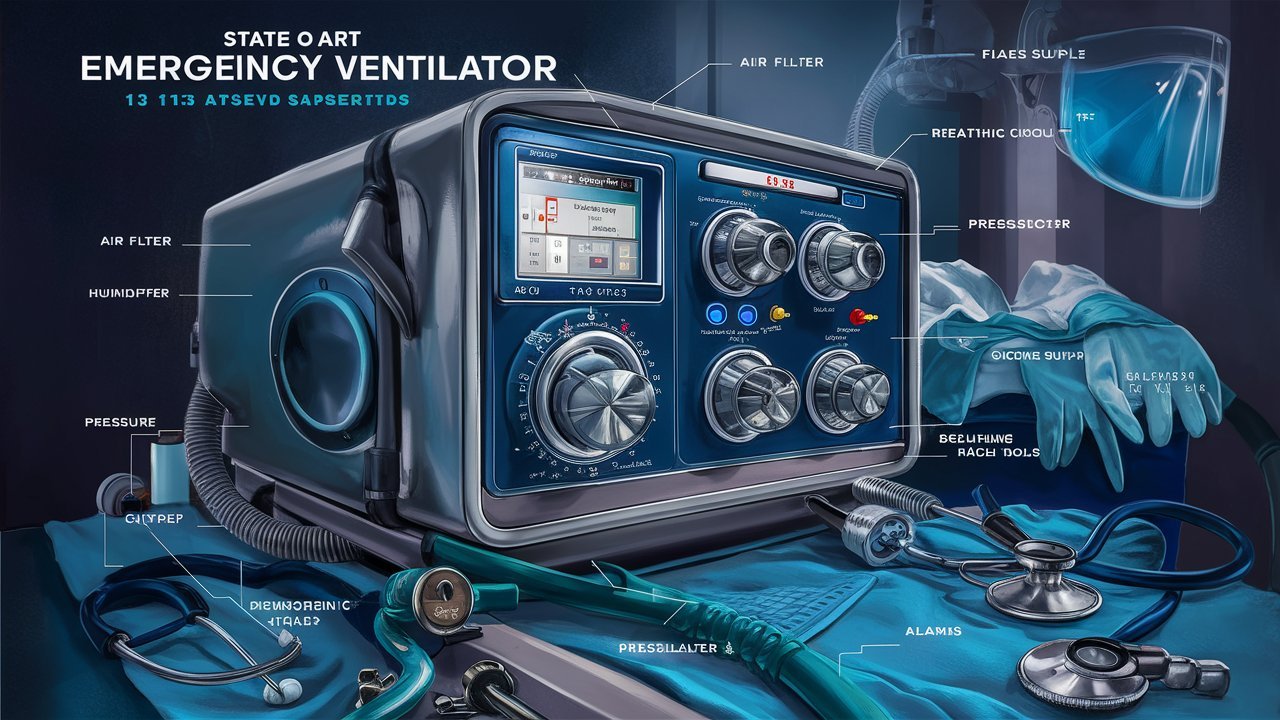In today’s fast-paced world, being prepared for emergencies is paramount. One crucial aspect of emergency preparedness is having the right equipment, and when it comes to life-saving devices, emergency equipment ventilators stand out. These devices play a vital role in providing respiratory support to patients in critical conditions. In this comprehensive guide, we’ll delve into the various aspects of emergency equipment ventilators, exploring their features, benefits, and importance in emergency medical care.

Understanding Emergency Equipment Ventilators
Emergency equipment ventilators, also known as ventilators or mechanical ventilators, are medical devices designed to assist patients with breathing when they are unable to do so effectively on their own. These devices deliver a controlled amount of oxygen and air into the lungs, supporting respiratory function and ensuring adequate oxygenation of the body’s tissues.
Key Features of Emergency Equipment Ventilators
Emergency equipment ventilators come equipped with a range of features to meet the diverse needs of patients and medical professionals alike. Some key features include:
- Intuitive User Interface: User-friendly interfaces make it easier for medical staff to operate the device efficiently, especially in high-pressure situations.
- Variable Settings: Ventilators offer adjustable parameters such as tidal volume, respiratory rate, and inspiratory/expiratory ratio to customize ventilation according to individual patient requirements.
- Monitoring Capabilities: Advanced ventilators incorporate monitoring features to track vital parameters such as oxygen saturation, respiratory rate, and tidal volume, allowing healthcare providers to assess patient response and adjust settings as needed.
- Battery Backup: Built-in battery backup ensures uninterrupted operation, making ventilators suitable for use in various settings, including ambulances and field hospitals.

The Importance of Emergency Equipment Ventilators
In emergency situations, every second counts, and having access to reliable ventilators can mean the difference between life and death. Here’s why emergency equipment ventilators are essential:
- Critical Care Support: Ventilators provide critical respiratory support to patients experiencing breathing difficulties due to conditions such as respiratory failure, pneumonia, or acute respiratory distress syndrome (ARDS).
- Versatility: Emergency equipment ventilators are versatile devices that can be used across different healthcare settings, including hospitals, intensive care units (ICUs), and emergency rooms.
- Emergency Preparedness: By having ventilators readily available, healthcare facilities can enhance their preparedness for mass casualty incidents, natural disasters, and other emergencies requiring respiratory support.
Addressing Common Concerns
While emergency equipment ventilators offer invaluable support in critical situations, there are some common misconceptions and concerns surrounding their use. Let’s address a few:
- Cost: While ventilators may represent a significant investment for healthcare facilities, their benefits in saving lives and improving patient outcomes outweigh the initial costs.
- Complexity: Some may worry about the complexity of operating ventilators, but modern devices are designed with user-friendly interfaces and comprehensive training programs to ensure ease of use for medical staff.
- Resource Allocation: Concerns about resource allocation during emergencies are valid, but proper planning and coordination can help ensure that ventilators are distributed equitably based on patient needs and severity of conditions.
FAQs (Frequently Asked Questions)
How do emergency equipment ventilators work? Emergency equipment ventilators deliver a mixture of oxygen and air into the lungs through a breathing circuit, providing mechanical support to patients who are unable to breathe adequately on their own.
Are emergency equipment ventilators safe to use? Yes, emergency equipment ventilators are rigorously tested and designed to meet stringent safety standards to ensure the well-being of patients.
Can emergency equipment ventilators be used outside of hospitals? Yes, many emergency equipment ventilators are portable and equipped with battery backup, making them suitable for use in various settings, including ambulances, disaster response units, and field hospitals.
What training is required to operate emergency equipment ventilators? Medical staff receive comprehensive training on the operation and maintenance of emergency equipment ventilators to ensure safe and effective use in clinical settings.
How do emergency equipment ventilators differ from standard oxygen masks? While oxygen masks deliver oxygen to the patient’s airways, emergency equipment ventilators provide mechanical support by assisting with the entire breathing process, including inhalation and exhalation.
What are the risks associated with emergency equipment ventilators? While rare, potential risks associated with ventilator use include barotrauma (lung injury due to pressure), ventilator-associated pneumonia, and complications related to prolonged ventilation.
Conclusion
In conclusion, emergency equipment ventilators are indispensable tools in the realm of emergency medical care, providing crucial respiratory support to patients in critical conditions. By understanding their features, benefits, and importance, healthcare professionals can better prepare for emergencies and ensure timely intervention to save lives.

